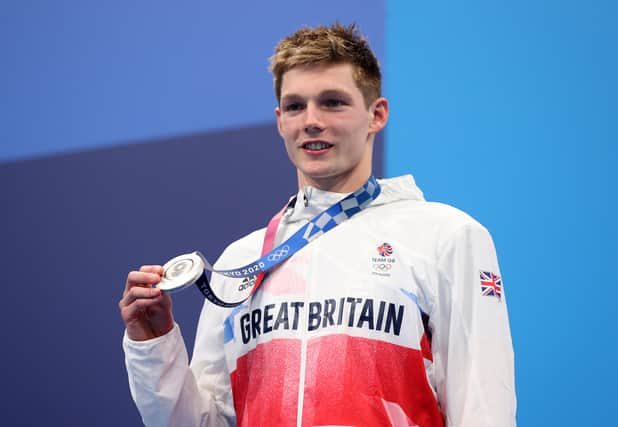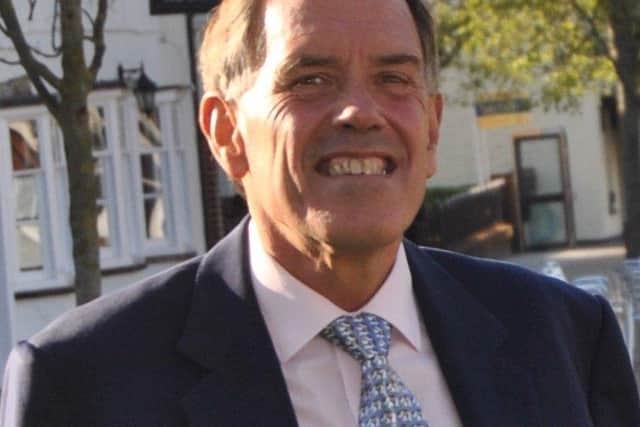Revealed: North West has less than two-thirds of public swimming space enjoyed by South East


The North West has less than two-thirds of the public pool space found in the South East, exclusive analysis shows.
The difference is equivalent to 28 Olympic-size swimming pools.
Advertisement
Hide AdAdvertisement
Hide AdThe stark regional disparities have been laid bare after Tokyo Olympics star Duncan Scott warned of the “quite sad” closure of pools across the UK.
Swim England said it predicted the nation would lose 40 per cent of its existing pools by the end of the decade, “potentially shutting millions out of the activities they love”.
The Government said its £100 million National Leisure Centre Recovery Fund had “secured the survival and reopening of more than 1,100 swimming pools all over the country”.
Some parts of England have 10 times less public swimming space than others, analysis of official figures by JPIMedia and ManchesterWorld show.
Advertisement
Hide AdAdvertisement
Hide AdThe analysis looked at all pools which are open to the public for free or on a pay-and-swim basis, excluding commercially-owned sites or those only available to members.
There are 1,997 public pools across 1,187 sites in England, totalling 503,233 square metres of pool space.
But when measured against the size of the population, some areas’ facilities are spread more thinly than others.
Loading....
The analysis found:
- The North West has 61,008 square metres of water space in all its public baths combined, less than two-thirds of the 96,624 in the South East;
- Bolton, Bury, Oldham, Rochdale, Stockport, Tameside and Trafford all have below-average amounts of public pool space per head;
- The Manchester council area has an above-average 984 square metres of pool per 100,000 residents;
- The North West does not have any Olympic-size swimming pools, although it has other 50m pools which do not meet Olympic width standards such as at Manchester Aquatics Centre;
- The North West only has two public diving pools while the South East has 13.
Great Britain Diving Federation president Jim McNally warned that access to diving pools had become a “postcode lottery”, thanks to the loss of ageing facilities and a recent funding focus by sports bodies on a handful of ‘centres of excellence’ for elite athletes.
Advertisement
Hide AdAdvertisement
Hide Ad“To that end, the Government policy of providing sport for all is in tatters,” he said.


“I think there are 11 centres of excellence scattered across the country but they are not scattered demographically properly.”
Earlier this month, Olympic gold medallist Duncan Scott warned of the “sad” loss of pools across the UK.
Speaking to BBC Breakfast, the Scottish swimmer said: “Where I grew up, in Clackmannanshire, we have not actually got a pool, they’ve all recently shut.”
Advertisement
Hide AdAdvertisement
Hide AdThe 24-year-old, who this summer became the first British athlete to win four medals at a single Games, said learning to swim was “so important for kids to, firstly, feel safe and confident within the water, but it is also quite an important social skill”.
He added: “I think it is quite sad, so hopefully over the coming months something is done about it.”
A spokesperson from Swim England said: “For everyone to be able to enjoy the physical and mental health benefits of swimming, it is absolutely vital that there are appropriate facilities in the right locations.
“Swim England’s 2019 Value of Swimming report forecast that the number of pools in England is set to decline by 40 per cent by the end of the decade, potentially shutting millions out of the activities they love.
Advertisement
Hide AdAdvertisement
Hide Ad“The coronavirus pandemic has only exacerbated the issue and it’s clear that local authorities need both short and long-term funding for facilities.
“Next month, we will be publishing a Value of Facilities report containing new insight which will give a clearer picture of the issue and the steps that need to be taken.”
The department for Digital, Culture, Media and Sport said: "We’re prioritising the nation’s fitness and health as we build back better from the pandemic, and swimming is a fantastic sport for all ages to enjoy.
“The Government has provided an unprecedented £1 billion of public money to ensure the survival of the grassroots, professional sport and leisure sectors.
Advertisement
Hide AdAdvertisement
Hide Ad“This includes the £100 million National Leisure Centre Recovery Fund which secured the survival and reopening of more than 1,100 swimming pools all over the country.
“On top of this Sport England, the Government’s funding agency, has provided over £8.5 million to swimming and diving projects, and over £16 million to Swim England since 2017. “We are putting the support in and are sure that Team GB’s incredible success at Tokyo 2020 will inspire many people to get swimming.”
Comment Guidelines
National World encourages reader discussion on our stories. User feedback, insights and back-and-forth exchanges add a rich layer of context to reporting. Please review our Community Guidelines before commenting.
